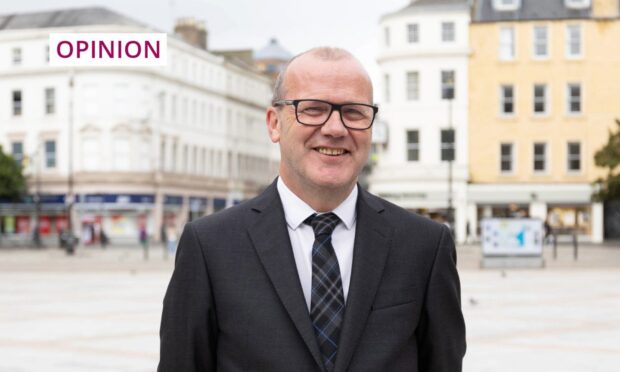It was with a heavy heart that I finished The Mirror And The Light this week. Hilary Mantel’s account of backstabbings and beheadings in the court of King Henry is just the ticket if you need transporting away from the real world right now, and no less compelling for knowing at the outset how Thomas Cromwell’s story ends.
There was a similar sense of inevitability as I looked back over our reporting on how local care homes have responded to the coronavirus crisis, although we’ve yet to see who will emerge as the villains and saints when this official history is written.
On March 11, as most of us were still going blithely about our near to normal lives, the Balhousie group, with 25 sites, 900 residents and 1,000 staff throughout north-east Scotland, pre-empted the official lockdown advice by almost a fortnight when it announced a ban on non-essential visitors, including relatives. A precautionary measure and a sensible one, given that the people in its care were among the groups at greatest risk of falling seriously ill if they became infected with Covid-19.
Others soon followed, sharing the steps they were taking to raise the spirits of residents in a series of outwardly cheery press releases, from penpal schemes and Skype calls with grandchildren to car park concerts and video messages from celebrities.
Fast-forward a month and the commitment of staff was still as strong. At homes in Forfar and Brechin, workers opted to live in, sacrificing time with their own families in order to shield their residents from potential exposure to the virus. But across Tayside and Fife the first outbreaks were being reported, and across Scotland the deaths were beginning to mount up. Robert Kilgour, the Fife-based founder of Renaissance Care, sounded a chilling warning, highlighting shortages in the supply of masks and testing kits and guidance from GPs that Covid-19 sufferers should not be sent to hospital. Staff felt they were being treated as cannon fodder, he said, and the country was facing a “tsunami” of care home deaths.
His words sound sickeningly prescient today. On Wednesday, as bosses at the Pitkerro Care Centre in Dundee confirmed the death of one of their employees, the Scottish Government revealed one in every four coronavirus victims had been a care home resident.
Perhaps we shouldn’t be surprised. By their nature, care settings are home to some of the most vulnerable members of society, the old, the frail and those with pre-existing health conditions. But we should still be saddened. Behind every number on the official graphs is a human tragedy, a life ended without the comfort of a loved one’s touch or the closure of a “proper” funeral. And we should still be demanding assurances that everything was done to prevent it from happening.
As she announced a new testing regime this week, Nicola Sturgeon said: “This shouldn’t need said but I want to say it – the residents of care homes matter every bit as much to us as people in the community or in hospital.” It’s a statement we should all reflect on. Imagine how loudly every alarm bell in the land would be sounding if one in every four victims was a child.
“When this is over” is becoming a mantra for these strange times – the parties we’ll have, the places we’ll go, the lessons we will learn from our cloistered existences. And maybe when this is over we will re-examine the way we regard our elders and the people we entrust with their care.
It’s possible, even understandable, that in the rush to avoid a repeat of the strain that kneecapped health services elsewhere, protective equipment and other resources were funnelled to hospitals to the detriment of care homes. It wouldn’t be the first time the sector has been overlooked. Leaders have long complained that governments on either side of the border have been miserly in their funding and in their recognition of the role they play. And maybe too many of us have been content to allow the care of our elders to be outsourced to people who are underpaid and undervalued. Turns out that, like so many so-called low-skilled workers, they’re the ones we can least afford to do without.
If the true measure of any society can be found in how it treats its most vulnerable, a re-evaluation of the care system when this is over would be an excellent place to start.
…………………………………………………………………………………
In case anyone was thinking of writing off the older generation as the silent victims of the pandemic, along comes Captain Tom Moore.
The 99-year-old war veteran set out to raise £1,000 for NHS Charities Together by completing 100 laps of his Bedfordshire garden before his 100th birthday and, at the time of writing, has racked up more than £19 million.
Not all heroes wear capes. Some wear a regimental blazer and walk with a frame, but extraordinary times call for extraordinary resolve and Captain Tom is the hero we all need right now.










